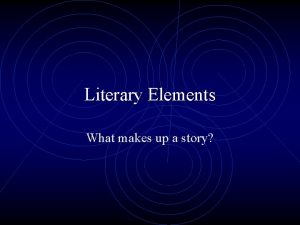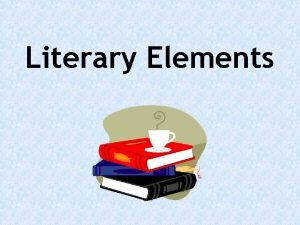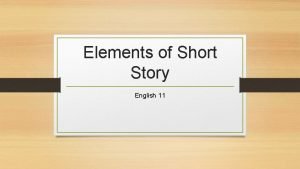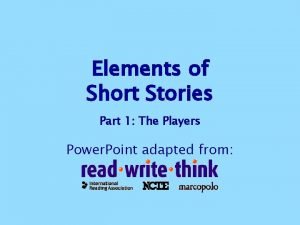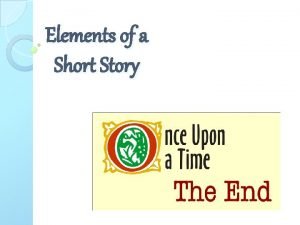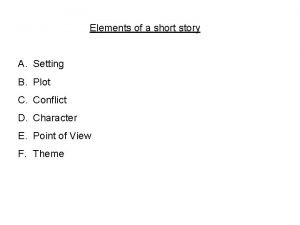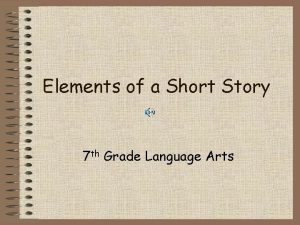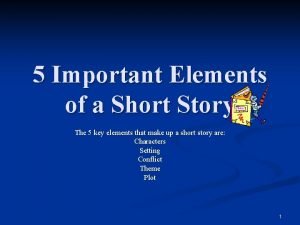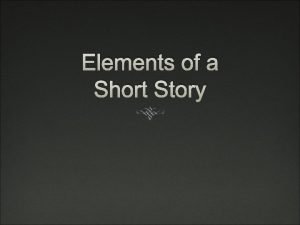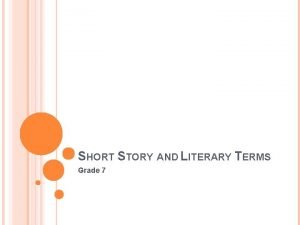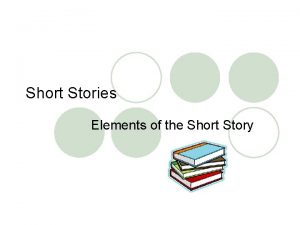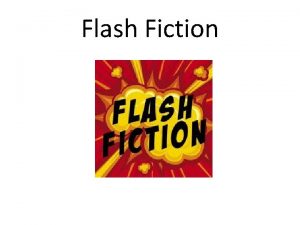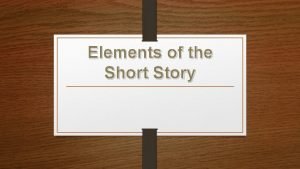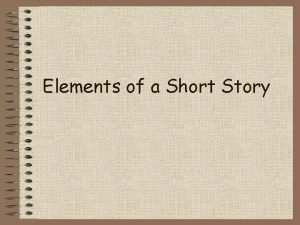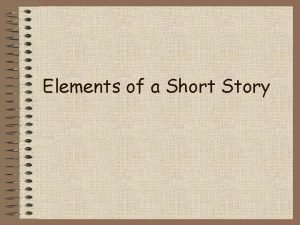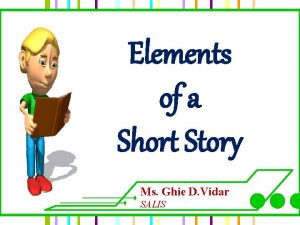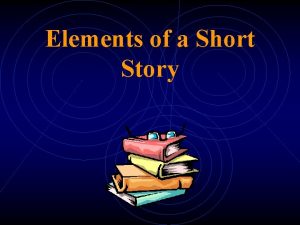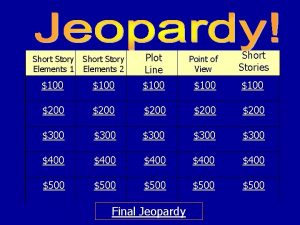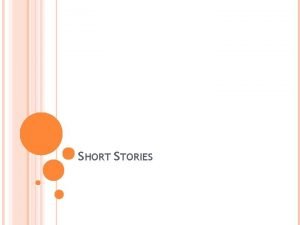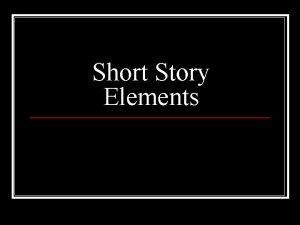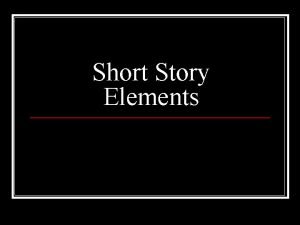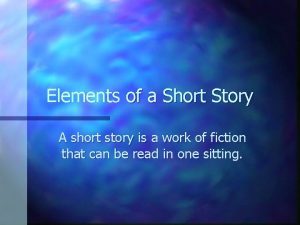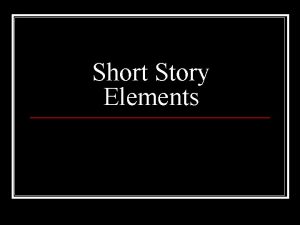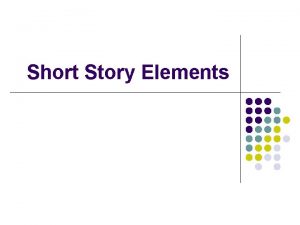Elements of a Short Story Ms Ghie D
















- Slides: 16

Elements of a Short Story Ms. Ghie D. Vidar SALIS

Objectives • Identify and define elements of a short story • Demonstrate mastery of short story elements by creating story grammar Elements of a Short Story


Overview Short Story A is similar to your dish. It needs the best ingredients for you to enjoy its delectable taste. Stories are made up of four important elements: Setting Characters, Plot, and Theme Elements of a Short Story

Setting Tells the reader where and when the story takes place.

Characters and Characterization The people, and in some stories, the animals that take part in the story. The description of the personalities of the characters in the story and the way in which an author reveals their personalities.

Two Identifications of Characters 1. Protagonist – the hero of the story 2. Antagonist – the villain in the story who is always opposing the protagonist

Methods of Characterization Creating Believable Characters • Indirect • Direct – physical appearance – speech, thoughts, feelings, or actions of the character – speech, thoughts, feelings, or actions of other characters – the narrator’s direct comments about a character

Plot • The chain of related events that take place in a story. • Built around conflict, which is a struggle between opposing forces.

• • The plot is the sequence or order of events in a story. The plot includes: Exposition Statement The part of the plot that tells how the story begins. PLOT DIAGRAM Rising Action The action in the story leading up to the climax. Climax Conflict Resolution The part of the plot that reveals the final outcome. ng A Risi The action in the story after the climax is revealed. Exposition on Falling action Conflict Acti The point of crisis in the plot. It may be the reader’s point of highest interest. ctio n Climax ing Fall The struggles or problems between opposing forces. Resolution


Types of Conflict -Man vs. Man -Man vs. Nature -Man vs. Obstacle or Society - Man vs. Supernatural Being -Man vs. Himself

Theme • The main idea of a story. • It is not a moral, lesson, or a rule for living. Ex. Love Family Feud Themes from ‘The Tragedy of Romeo and Juliet’

CONCLUSION Now that we have identified and defined the elements of a short story, let us use the elements to analyze a Short Story. You may use your notes from the Power. Point presentation to assist you when reading. .


Bibliography Dinneen, K. Elements of the Short Story. Retrieved Jun. 19, 2003, from Yale-New Haven Teachers Institute: http: //www. yale. edu/ynhti/curriculum/units/1983/3/83. 09. x. html Five Elements of a Story. Retrieved Jun. 19, 2003, http: //www. teachervision. com/lesson-plans/lesson-2277. html Guevin, D. Short Story Elements. Retrieved Jun. 19, 2003, http: //www. uvm. edu/~dguevin/Elements. html
 Long and short
Long and short Short story introduction
Short story introduction Elements of a short story video
Elements of a short story video Elements of the story example
Elements of the story example 5 important elements of a short story
5 important elements of a short story Elements of a short story powerpoint
Elements of a short story powerpoint Short story elements
Short story elements Setting in short story
Setting in short story Elements of a short story grade 7
Elements of a short story grade 7 5 elements of short story
5 elements of short story Identify the elements of short story. *
Identify the elements of short story. * Short story grade 7
Short story grade 7 Parts of a short story
Parts of a short story Flash fiction
Flash fiction Short story plot map
Short story plot map Short story elements definitions
Short story elements definitions Short story elements definitions
Short story elements definitions


